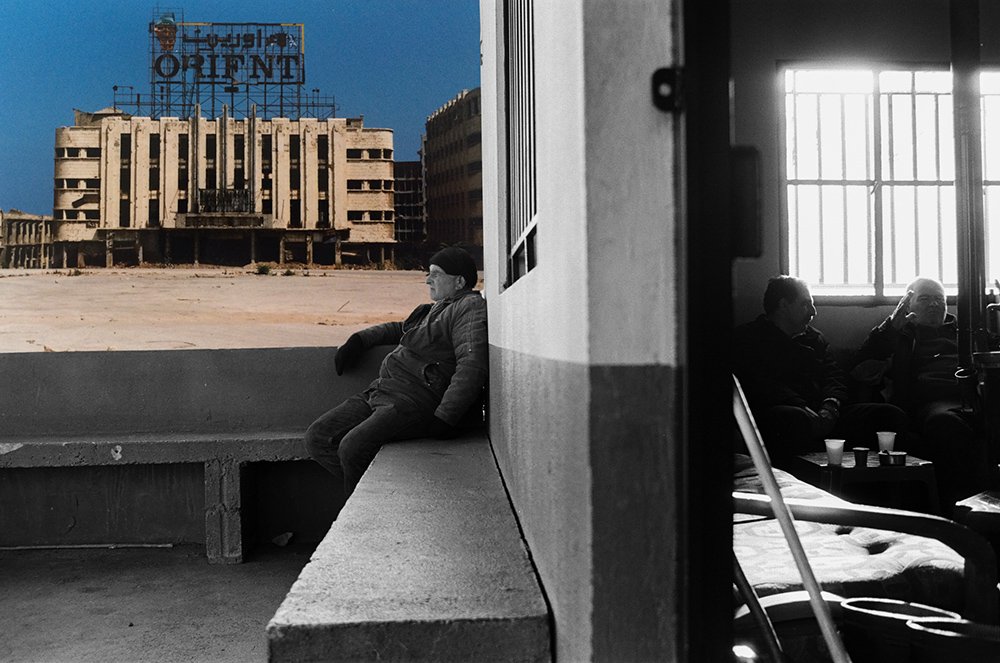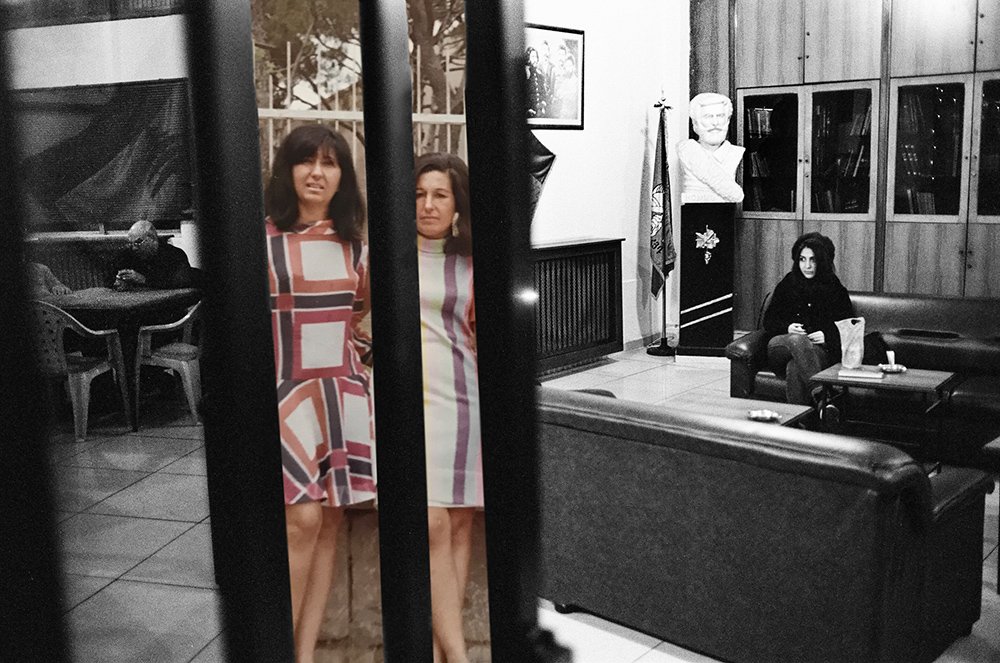But for the Happenstance of History: The Art of Ara Oshagan
By Adriana Tchalian
Los Angeles-based photographer and installation artist Ara Oshagan explores identity, diaspora, and displacement in “Disrupted, Borders.” Curated by Ryann Casey, the solo exhibit debuted at the Stockton University Art Gallery in New Jersey.
The exhibit features a series of narratives braided together, such as but for the happenstance of history I (also titled “Beirut Memory Project”), but for the happenstance of history II, displaced, Gather (also titled “Artsakh Scrolls”), Shushi Portraits, and That You May Return.
Unlike the vivid colors of the Sushi Portraits (Digital Collage, 2012-2021) or the dark, painterly tableaus of displaced (Black and White Photographs, 2022), the Beirut Memory Project (Digital Collage, 2018-2021) is a cognitive exploration on the subjects of diaspora and displacement. These digital collages feature black-and-white photos taken during Oshagan’s 2014-2018 trips to Beirut. Interspersed among the images are faded color photographs of his family taken before the Lebanese Civil War (1975–1990). The series also includes dramatic photos of war-torn Beirut taken by Oshagan in 1992, before he became a visual artist.
These collages are evocative of contemporary artists like Brooklyn-born Martha Rosler (b. 1943) and the Croatian David Maljković (b. 1973). In the case of Maljković, abandoned buildings and eroded political monuments bear witness to what he considers to be the failings of the now-capitalist Croatian state. Likewise, Oshagan’s crumbled buildings and failing infrastructure point to the region’s geo-political wrongdoings that played an integral role in his displacement as a Lebanese-born Armenian artist who fled Beirut to start over in the United States.
Beirut Memory Project #56, 2019
In but for the happenstance of history I, #56, Oshagan features an individual looking out from among the bookshelves of a library that opens entirely onto a war-ravaged boulevard in Beirut. The juxtaposition of the books, signifying wisdom, set against the relics of war is striking, to say the least. And despite all the evidence of bombs and bullets, there is a palpable silence encased within the collage. Oshagan’s camera arrives on the scene after and before (in that order) the explosions, capturing the silent space in between for the viewer to contemplate.
In the case of his short film, but for the happenstance of history II (Three-Channel Film, 2021), the eruptions are emotional and psychological, and the devastation he captures is within his subjects rather than without. (This film is streaming in our Kolligian Media Room.)
This four-minute film, produced during Oshagan’s 2017-2018 trips to Beirut, is a split-screen format that showcases three screens in one, hence the name “Three Channels.” In one notable vignette, we see a channel featuring the silent gaze of a beautiful young woman whose life has been ravaged by war. The chaotic scribbling (graffiti) on the wall behind her symbolizes her shattered mental state.
The second channel, which appears next to her, is that of sheep being slaughtered on a filthy floor in a nondescript building, signifying the mutilated lives of the people. And finally, a third channel presents a middle-aged Armenian woman having a full-blown nervous breakdown. Like the chaotic scribbles on the wall of the first channel, a long-stem rose dangles in the background as she tries to convey her brokenness to the camera. Ara forms a striking audible and visual contrast between the silent young woman in the first channel and the verbose older woman in the third channel to give the viewer a rare glimpse into that which cannot be seen or felt otherwise.
Beirut Memory Project #10, 2018-2021, Digital Collage
Like the film, the collages in this series (but for the happenstance of history I) routinely feature desolate, empty spaces, perhaps as another mode of portraying silence. Oshagan utilizes narrative ambiguity to construct psychologically-charged tableaus steeped in stillness, melancholy, and detachment – almost to the point of aversion.
He reduces his human subjects to mere fixtures – a vase here, a rug there. In but for the happenstance of history I, #10, he strips away the non-essentials, leaving crisp, clean lines and simple geometric shapes, redolent of Paul Klee (1879-1940). These elemental forms – cylinder, sphere, cone – are props on a stage with “displaced” actors playing a role, like a dreamscape.
These collages have a stern tone that is unlike any in the exhibit. Even the subject of beauty is approached with apprehension, as in Oshagan’s silhouette of two women who, despite their attractive appearance, seem troubled and weighed down (but for the happenstance of history I, #49). A turpentine veneer incrusts the photos, giving the collages a vintage appearance that enhances this stern, somber tone.
Beirut Memory Project #49, 2018-2021, Digital Collage
These photos are painful markers of a life that could have been – were it not for the Armenian Genocide of 1915 and its cascading effects. Here, Oshagan painfully reenacts and retraces his epic journey, patching together bits and pieces of memory to better understand his identity. Exile, migration, displacement, and deracination are captured through his lens, giving the viewer a glimpse into a hidden world.
“The collages are a collection of past and present memories that enabled me to process this passage – from one country to the next and from one identity to the next,” he explains. “It never ends, it seems.”
This essay is reposted with permission from the catalogue for “Disrupted, Borders,” which was on exhibition at Stockton University Art Gallery from January 18 to April 6, 2023. Adriana Tchalian is an art historian who has managed several galleries in Los Angeles.



